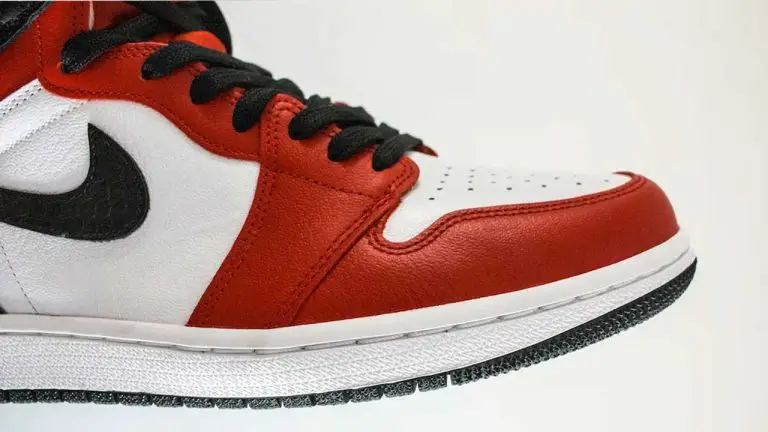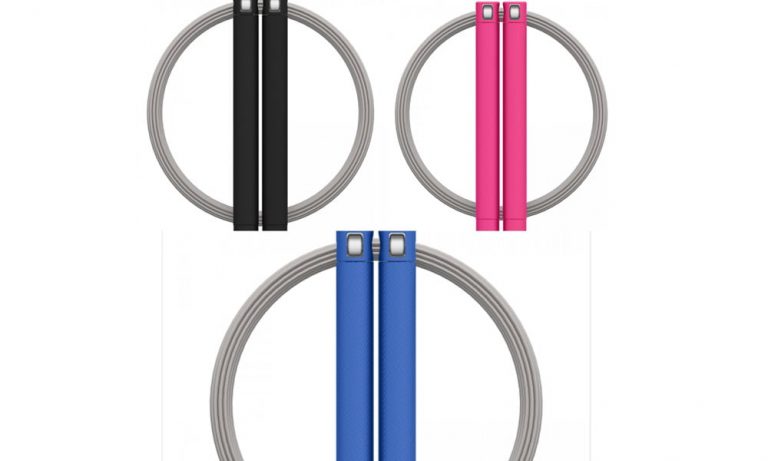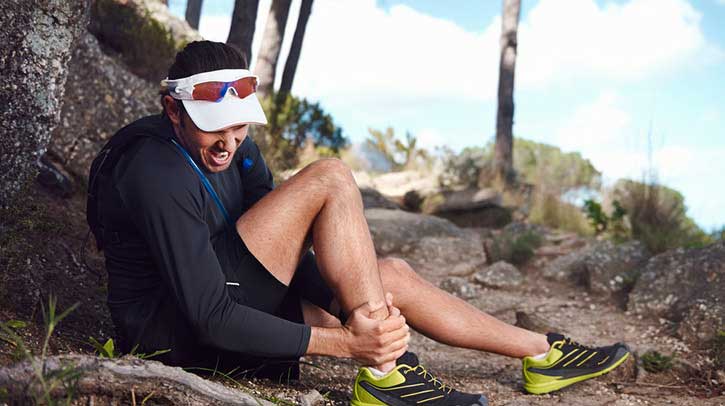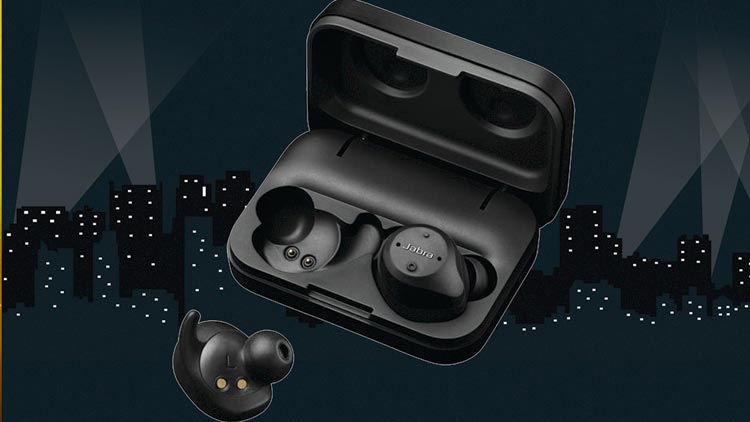Is The Jordan 1 A Good Lifting Shoe?
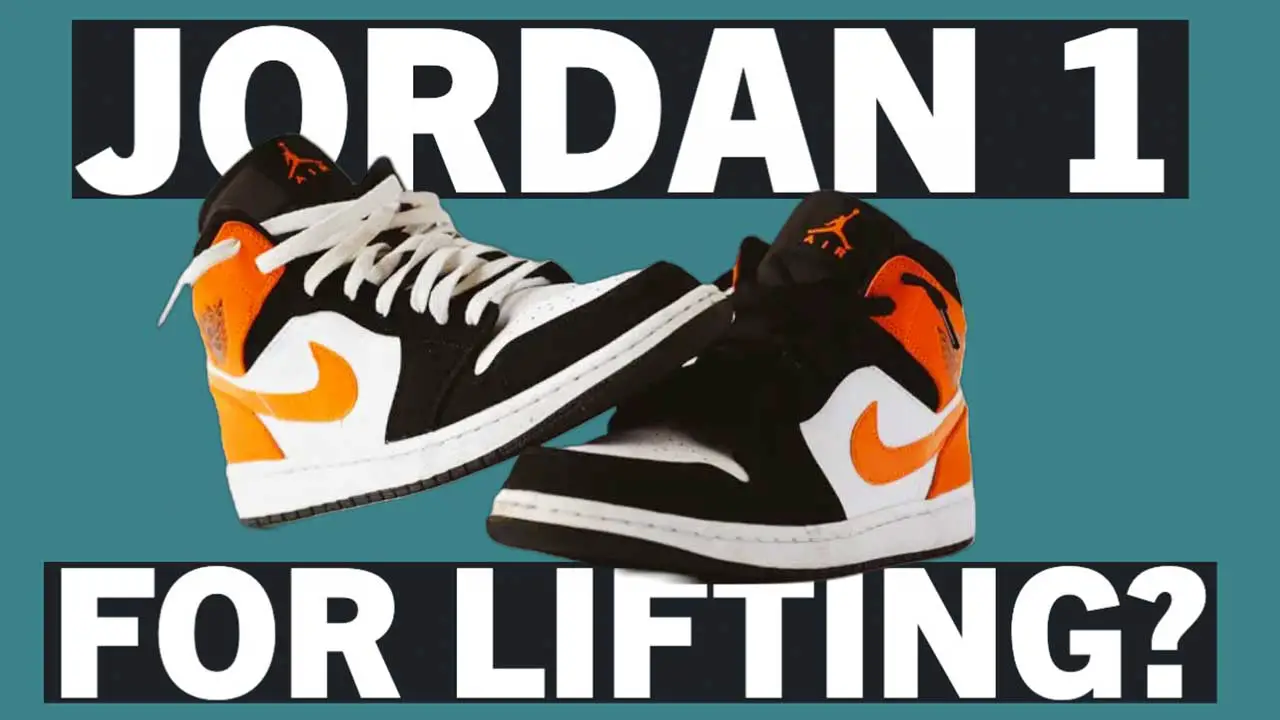
ListedFit is reader-supported. When you buy through links on our site, we may earn a small commission.
The Nike Air Jordan 1, initially designed for basketball superstar Michael Jordan, has gained popularity not just for its design, but also for its performance and comfort.
As more people gravitate towards this iconic shoe, some gym goers have considered the Air Jordan 1 for weightlifting and other gym activities.
While the Air Jordan 1 is known for its style and history, its functionality extends well beyond the basketball court. But, it is essential to understand that not all athletic shoes are created equal.
Different activities require specific features tailored to provide optimal performance.
Let’s examine the key aspects of the Air Jordan 1, from its design elements to its support and fit, to ultimately determine if it’s well-suited for a lifting or gym environment.
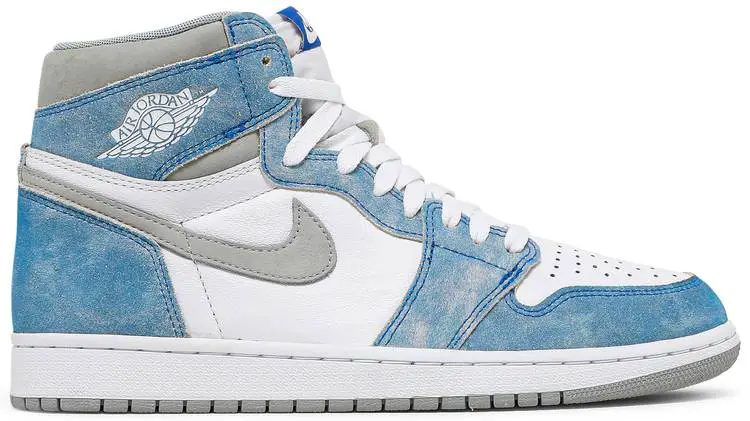
Key Takeaways
- Air Jordan 1’s design and history expand beyond the basketball court, sparking interest for gym use
- Assessing the shoe’s fit, support, and performance features is crucial for weightlifting and gym exercises
- Comparing the Air Jordan 1 to specialized weightlifting or cross-training shoes can help guide the decision
Table of Contents
- Is The Jordan 1 A Good Lifting Shoe?
- Are Jordan 1s Good for Squats?
- Are Jordan 1s Good for Deadlifts?
- Pros and Cons of Wearing Jordans to the Gym
- What Makes a Good Lifting Shoe?
- Does the Jordan 1 Give You What You Need?
- Do Jordans Make Good Cross-Training Shoes?
- Good Options of Shoes for Weightlifting
- Are Converse Chuck Taylors A Better Lifting Shoe?
- Conclusion
- Frequently Asked Questions
Is The Jordan 1 A Good Lifting Shoe?
Key Features for Performance
Stability and Traction
The Nike Air Jordan 1 provides good stability due to its solid rubber outsole and high-top design.
The rubber outsole offers excellent traction on a variety of surfaces, making it suitable for most gym workouts.
The high-top design helps support the ankle, keeping it secure during lifts and exercises where stability is key, such as squats and deadlifts.
To experience this stability though, you would have to lace them up fully.

Comfort and Breathability
The comfort of the Air Jordan 1 lies in its cushioning and fit. The shoe features a well-padded collar and tongue, that gives you a comfortable fit around the ankle.
Another good thing is that the shoe’s Nike Air cushioning in the heel gives adequate support and absorbs impact during workouts.
Breathability is another important aspect of a good gym shoe. The Air Jordan 1 is constructed with leather and synthetic materials, which allow for some degree of airflow.
But you have to keep in mind that these materials may not provide the same level of breathability as other shoes specifically designed for gym workouts with mesh or knit uppers.
Despite this, the overall comfort and stability of the Jordan 1 shoe make it a decent choice for a gym shoe, but it does depend on what sort of moves you’re going to be doing.
Are Jordan 1s Good for Squats?
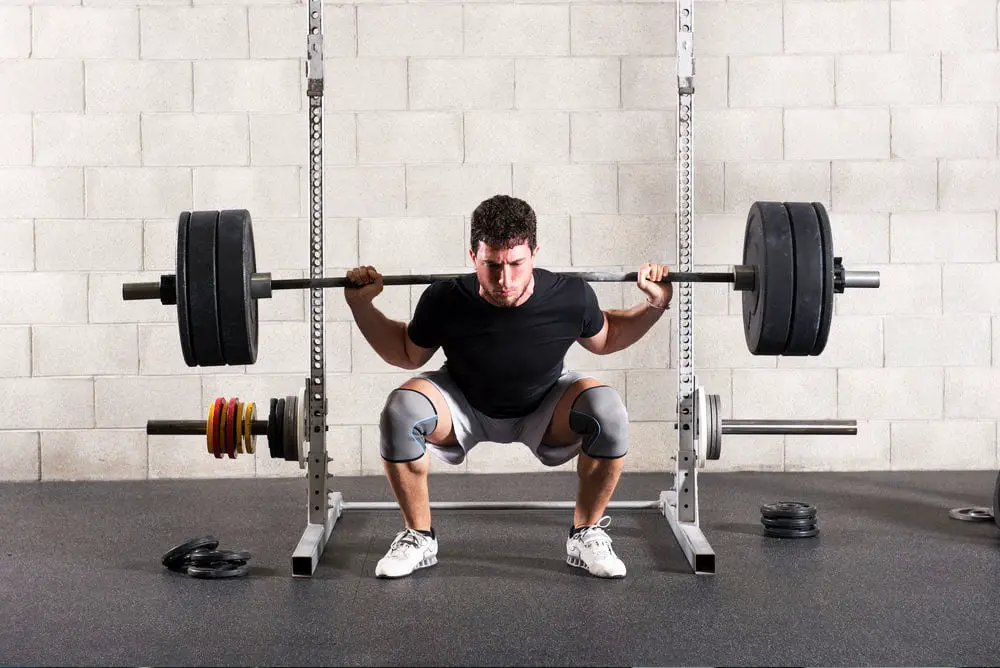
Squats are one of the primary weightlifting workouts. Anyone who has done any lifting knows there are specific postures and motions needed for a solid squat, both for maximum performance and for health and safety.
Squatting requires a combination of having feet flat on the ground, chest elevated in the air, and back straight and aligned.
This position maximizes the use of your legs while minimizing the motion of your back and chest, preventing injury to your torso while also creating a rigid posture to support the carried weight.
To get that posture, there are different requirements and recommendations for shoes, but typically it is encouraged to have a solid sole with little cushion, a wide toe box to allow your feet to spread out and create a wider base in contact with the ground, and a large heel-to-toe drop.
This drop allows the foot to angle properly to give you the posture you need, while also providing force directly downward, or “pushing through the floor” as they say.
Jordan 1s offer some of these benefits. For instance, they have a reasonable heel-to-toe drop and a wider toe box to encourage proper posture and offer good structural support.
However, they are softer in their sole as they were designed for basketball.
The Jordan 1s are great shoes overall, but they were intended for use in a running sport, meaning the sole was designed to absorb shock and impact as opposed to providing direct force transfer.
Because of that, these shoes are not the best for squats, although they can certainly be used in a pinch.
Are Jordan 1s Good for Deadlifts?
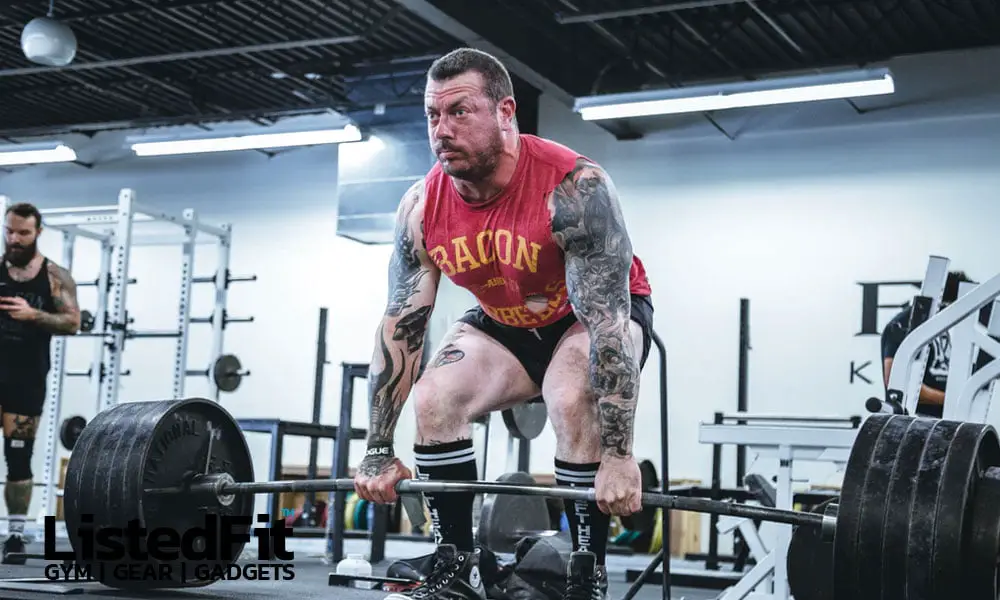
Deadlifts are a different animal than squats, although many of the needs are the same.
When you’re performing a deadlift, you use different postures and muscle groups, so you’re going to need some different things out of your shoe.
Ankle stability is still important because you run the risk of ankle injury whenever you’re supporting heavy weight, particularly without any restrictions to steady the ankle.
The shape and angle of the shoe, however, is not quite as important, because you aren’t engaging in as much motion with your legs.

The important pieces for a deadlift shoe are the sole and the ankle stability, as well as the toe box because you need to create a solid base for whatever lifting you’re doing.
The Jordan 1 checks a few more of these boxes compared with their usefulness in squatting.
The wider base and toe box allow for a higher surface area to stabilize your base, and the ankle support is very solid.
Unfortunately, it still runs into the issue of a highly cushioned sole, which is detrimental to any sort of lifting.
When you do a deadlift, you want to be able to push your feet downward to drive the force of the lift into the floor.
Softer soles absorb some of this force, and they leave you with less stability and force overall.
While Jordan 1 is a great sneaker in high demand, I wouldn’t say they are the best for doing these exercises.
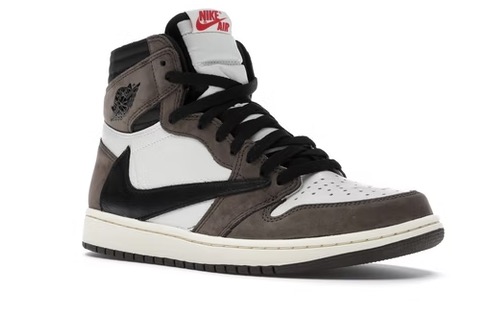
* Olive green and dark mocha brown
leather
* Signature Swoosh logo detail
* Front lace-up fastening
* Round toe
* Flat rubber sole
Pros and Cons of Wearing Jordans to the Gym
The Nike Air Jordan 1 is a popular and iconic sneaker, but is it suitable for gym workouts and lifting? Here are the pros and cons of wearing Jordans to the gym.

- Stability: The Air Jordan 1 features a sturdy, flat sole which can provide a stable base for exercises like squats and deadlifts. This is beneficial for those who want to maintain proper form during their lifts.
- Ankle Support: The high-top design of the Air Jordan 1 offers additional ankle support, which may be helpful during certain exercises or for individuals who have a history of ankle injuries.
- Durability: Made with high-quality materials, the Air Jordan 1 is known for its durability. Frequent gym use can cause wear and tear on shoes, but the Jordans can withstand this, ensuring that the user gets their money’s worth.
- Style Factor: The sneaker is undoubtedly stylish, allowing gymgoers to sport a fashionable look while working out.
- Weight: As a basketball shoe, the Air Jordan 1 is heavier than specialized gym shoes, which might hinder performance during exercises that require agility or quick movements.
- Lack of Flexibility: The sturdy materials and design of the shoe can limit flexibility, making it less suitable for exercises that involve a full range of motion, particularly for foot or ankle movements.
- Breathability: While durable, the materials used in the Air Jordan 1 may not provide optimal breathability during a gym workout. This could lead to discomfort and sweaty feet.
- Cost: The Nike Air Jordan 1 is often on the pricier side due to its popularity and iconic status. Gym-goers may want to consider other, more affordable options designed specifically for gym workouts.
While the Nike Air Jordan 1 has both pros and cons when it comes to gym use, it is an individual’s personal preferences that will ultimately determine whether these iconic sneakers are the right choice for your lifting and gym workouts.
What Makes a Good Lifting Shoe?
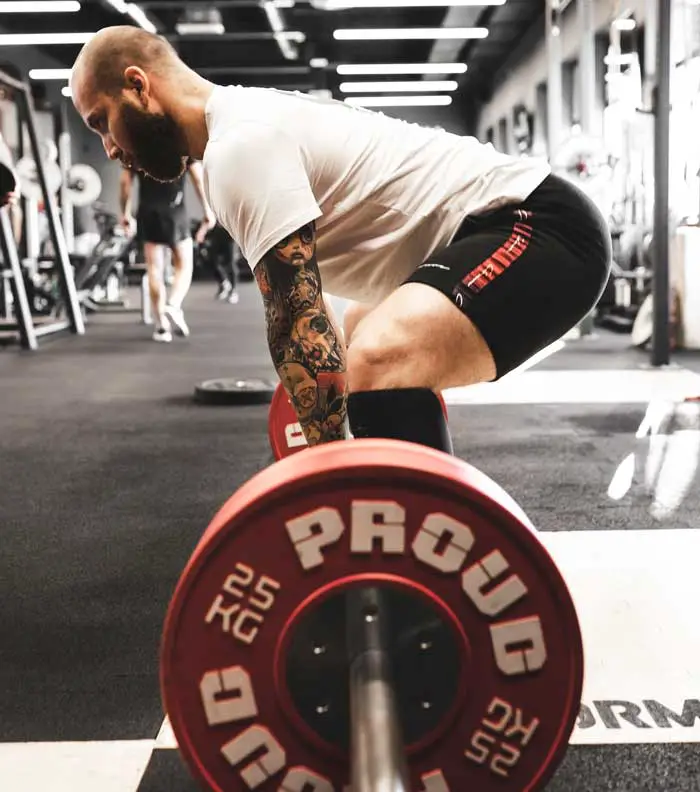
I guess the real question here is what actually makes a good lifting shoe?
There are people who will tell you that you absolutely have to buy performance lifting shoes – but those can be expensive.
Another thing is that if you’re not a competitive lifter, it may not seem worth your money to get professional-grade shoes.
That begs the question then, how do we determine what is a good lifting shoe?
It’s as simple as looking at what benefits these professional shoes offer compared to others.
First and foremost, they offer support and structure.
It makes sense that reducing ankle movement is vital to the sport of lifting.
Imagine trying to lift several hundred pounds while your ankle is swaying rapidly back and forth.
That would not only make the task far more difficult but would risk significant injury to your ankles and feet.
A good lifting shoe will provide structure around the ankle to help limit movement and align the ankles.
Proper ankle alignment protects your feet from injury and it also helps to focus your strength.
When your ankles are aligned vertically, you can maximize the strength generated from your feet and the muscles in your calf, because they’re pushing directly upwards, maximizing lift.
Another benefit of good lifting shoes is a solid sole. Well-designed lifting shoes have a very sturdy sole that transfers force directly downwards without compressing significantly.
The more cushion on the bottom of the shoe, the less structure it provides, and the less force is able to travel through the lifting motion.
Think of it this way – with a cushioned sole, you are using some of your lifting energy just to compress the sole so that it will support you and transfer that force directly into the floor.
If you’re concerned about getting your Jordan 1s creased, then you probably shouldn’t wear them to the gym!
Does the Jordan 1 Give You What You Need?
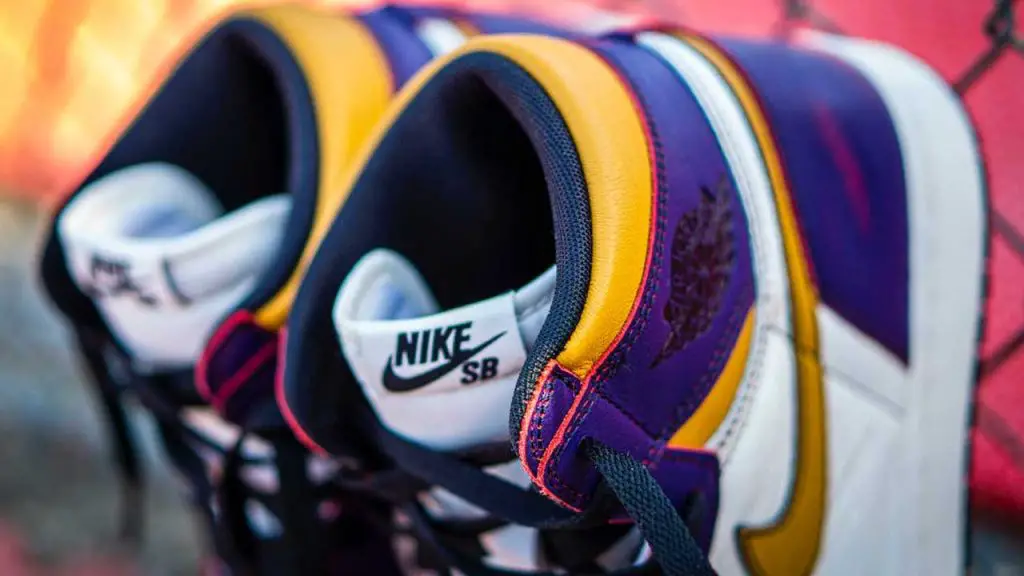
The Nike Air Jordan 1, although primarily a basketball shoe, can provide adequate fit and support for gym activities.
The shoe offers features that are instrumental in workouts, such as support, ankle support, and a snug fit as well as a very flat non-compressing sole much like a Converse Chuck Taylor.
- Support is one of the key aspects to consider in a gym shoe, as it helps maintain proper form and stability during various exercises.
The Nike Air Jordan 1 has a structured design that provides a good level of support during weightlifting and other gym activities.
The shoe’s solid rubber outsole ensures a firm grip on the ground, which can promote balance and prevent slips during workouts.
- Ankle support is another crucial factor for gym-goers, especially during weightlifting exercises such as squats and deadlifts.
The high-top silhouette of the Jordan 1 gives you additional ankle support to reduce the risk of injuries. The padded collar around the ankle adds comfort and protection, allowing for a secure and comfortable range of motion throughout gym sessions.
- A snug fit can be useful in any workout shoe, as it prevents unnecessary movement within the shoe and ensures optimal foot stability.
When working out in a pair of Nike Air Jordan 1s it’s advised to lace them up fully so that your foot is more stable. And that means using all of the lace holes as well. Otherwise it makes wearing them as a lifting shoe pretty useless.
Lacing them up fully will make them more likely to develop creases as well, but I would say if you’re concerned about getting your Jordan 1s creased, then you probably shouldn’t wear them to the gym.
While the Nike Air Jordan 1 may not be specifically designed for lifting or gym activities, its features such as support, ankle support, and a snug fit make it a suitable option for those in search of a versatile and stylish workout shoe. But, it is essential to secure them properly.
Do Jordans Make Good Cross-Training Shoes?
The Nike Air Jordan 1 when it comes to cross-training activities such as CrossFit, the shoe’s performance may be very different.
Let’s break down the aspects that make a good cross-training shoe and see if Air Jordans fit the bill.
In cross-training, flexibility and range of motion are crucial to perform various exercises efficiently. The Air Jordan 1 features a high-top design, which may provide ankle support but can also limit ankle mobility.
This could affect exercises that require quicker lateral movements and flexibility, such as box jumps or plyometric training.

The traction pattern of a cross-training shoe is essential for stability during different activities. Defining traction patterns in the outsole can ensure a proper grip on various surfaces, reducing the risk of slipping during exercises.
The Air Jordan 1’s traction pattern is designed for basketball performance, meaning that it may not be optimal for cross-training workouts that take place on diverse surfaces like turf, rubber flooring, or even concrete.
Nike offers a vast selection of training and gym equipment specifically designed for cross-training purposes. Like the Metcons for example.
These are of course more tailored to provide the necessary support, traction, and flexibility required in a CrossFit environment. In comparison, Air Jordans may lack some of these features that make for a good cross-training shoe.
Good Options of Shoes for Weightlifting
While the Nike Air Jordan 1 is a stylish and iconic shoe that you could get away with wearing for certain activities, it is not specifically designed for all training or gym activities.
Lifting shoes, such as the Nike Romaleos, offer features like a solid base, elevated heel, and secure strap system for stability and support during strength training exercises. A flat sole allows better balance and control, making it a critical aspect in deadlifting shoes.
The Nike Metcon are another very popular option specifically designed for gym activities and strength training. They have some unique features that make them a better option than a Jordan, such as a more lightweight and flexible design, they also provide enhanced comfort, support, and durability during workouts.
In contrast, the Nike Air Jordan 1 has a thicker sole and higher profile. Although they can still be worn for general gym activities, they are not the ideal choice for those looking to maximize their lifting performance.
Are Converse Chuck Taylors A Better Lifting Shoe?
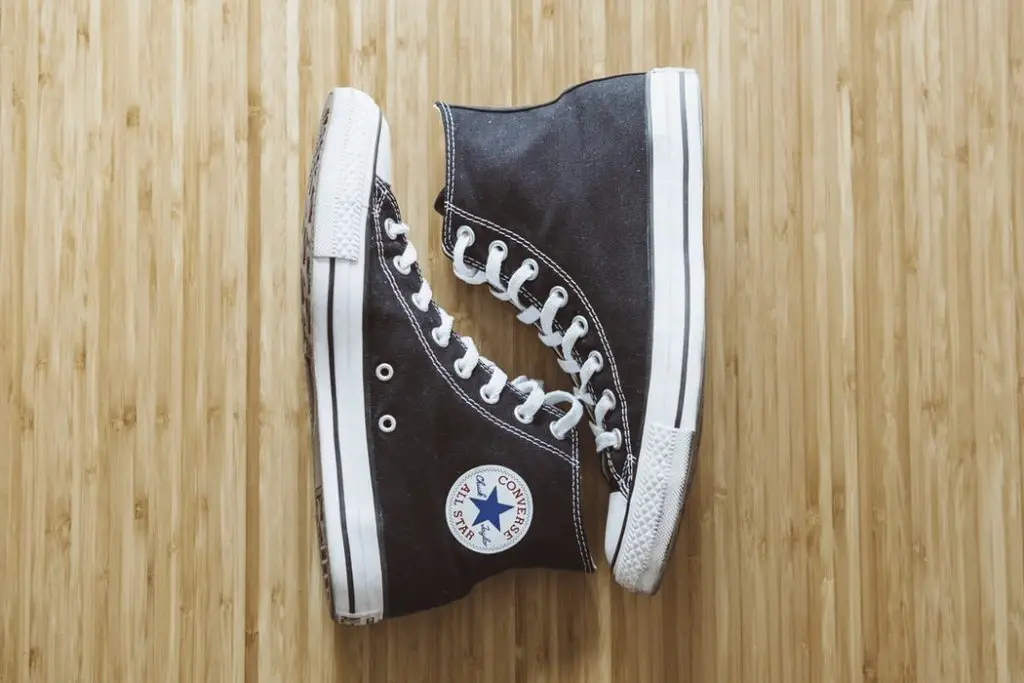
Surprisingly, one of the best overall pairs of shoes for heavy lifting is the Chuck Taylor All-Star, particularly the High Tops.
They may not be the performance grade shoes that some trainers insist upon, but for the majority of your lifting work, Chuck Taylors will perform better than most else.
Knowing what we’ve learned about a good lifting shoe, it’s pretty easy to see why they fare so well.
First and foremost, the High Top shoes offer great ankle stability. You can lace them all the way up past your ankle and lock your feet into position easily and effectively.
This prevents a lot of injuries and helps you maintain stability throughout the exercise.
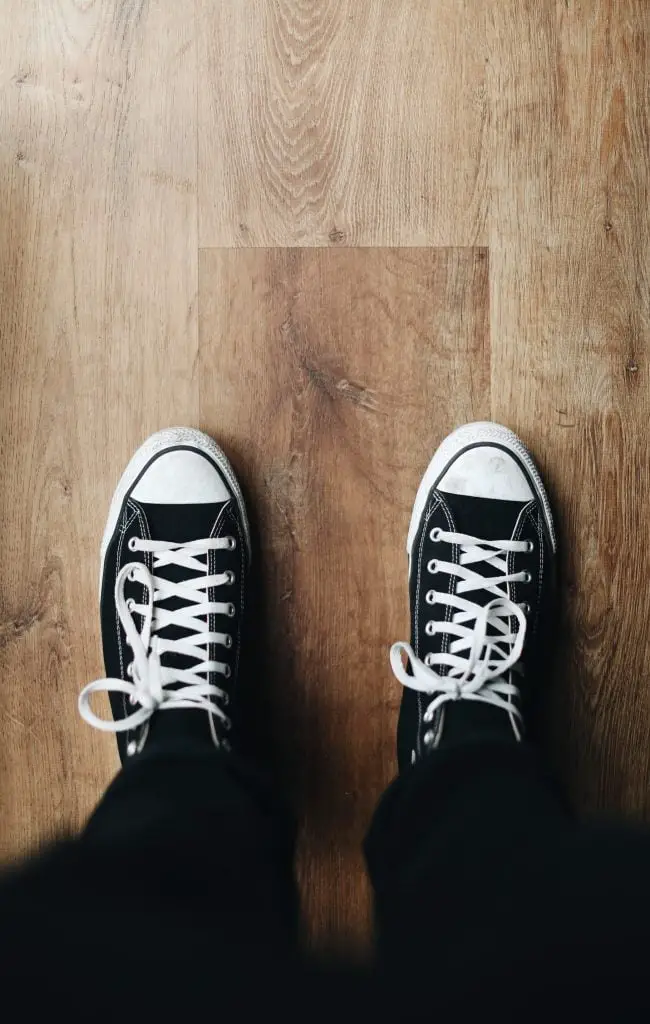
Additionally, the rigid soles are great for driving the lift through the floor.
You’re not wasting any energy on compression or stability, so all of that force can go directly into the lift.
For squats and deadlifts, these shoes have wide toe boxes and a relatively high heel-to-toe drop, meaning it fits the bill for a wide variety of lifting activities.
While they’re relatively cheap, they provide all the benefits of higher cost lifting shoes, and they’re extremely versatile.
For one, they are commonplace, so you can wear them as regular attire, but they also come in a variety of colors to give you options.
Their versatility also means they can be used throughout your entire lifting workout as they cater equally well to both options.
They are and have always been the standard lifting shoe for everyday lifting.
Conclusion
Finding the right lifting shoe can seem like a daunting task, but when you know the features you need, it’s pretty simple.
The Chuck Taylors are the gold standard for a regular lifting shoe.
While the Jordan 1s are great shoes and may provide the aesthetic look you’re going for, they may not offer quite the support and rigidity that you need when doing the serious lifting.
Frequently Asked Questions
Can you use any basketball shoes for weightlifting?
While basketball shoes like the Nike Air Jordan 1s can be used for weightlifting, they may not be the ideal choice.
Basketball shoes are designed for jumping, quick movements, and lateral support, which doesn’t necessarily translate to the stability required for weightlifting.
But if you’re focused mainly on light weightlifting, the Jordan 1s can provide a decent experience.
What are suitable alternatives to Jordan 1s for gym workouts?
If you’re seeking alternatives to Jordan 1s for gym workouts, it’s essential to consider the type of workout planned.
For weightlifting, shoes with a flat, hard sole and good ankle support, like weightlifting shoes or Converse Chuck Taylors, are suitable options.
For cardio and cross-training workouts, something like a Metcon or running shoes offer better cushioning and support for various movements.
What are the benefits of dedicated weightlifting shoes over Jordans?
Dedicated weightlifting shoes provide better stability, grip, and support for weightlifting compared to basketball shoes like Jordans.
They often feature a raised heel, which promotes proper form and mobility during squats or Olympic lifts.
Also, weightlifting shoes have a hard, flat sole that allows for better force transfer, helping you lift more efficiently.
How do Air Jordans compare to other athletic shoes for gym use?
Air Jordans, being basketball shoes, are better suited for activities that require jumping and lateral movement than pure weightlifting or cardio workouts.
They provide ankle support and cushioning for activities like basketball and general gym workouts but may not provide adequate support and stability for heavy weightlifting or long-distance running.
Are Air Force Ones a better option for lifting than Air Jordan 1s?
Like Air Jordans, Air Force Ones are also basketball shoes with a focus on style and comfort.
While they may provide decent support for general gym workouts, other options like weightlifting shoes, cross-trainers, or even flat-soled shoes may offer better stability and performance for lifting.
How do Vans perform as lifting shoes compared to Air Jordans?
Vans, with a flat sole, can perform better as lifting shoes compared to Air Jordans.
The flat, thin sole of Vans improves stability and force transfer during weightlifting, providing an experience closer to dedicated weightlifting shoes.
The thing is that Vans lack the ankle support and cushioning found in Air Jordans, making them less suitable for other gym activities or sports.
Author
-
Stuart Patrick is a health and fitness lifestyle journalist who writes for ListedFit.com.
“I've spent a lot of time trying to get in shape and change my body and I realised there are so many untruths in the health and fitness industry that can slow down or stop your progress, so I share my knowledge and experience to help others to cut through the BS.”
Latest entries
 NutritionJune 5, 2024Shilajit Products
NutritionJune 5, 2024Shilajit Products FitnessMay 14, 2024Donate Blood
FitnessMay 14, 2024Donate Blood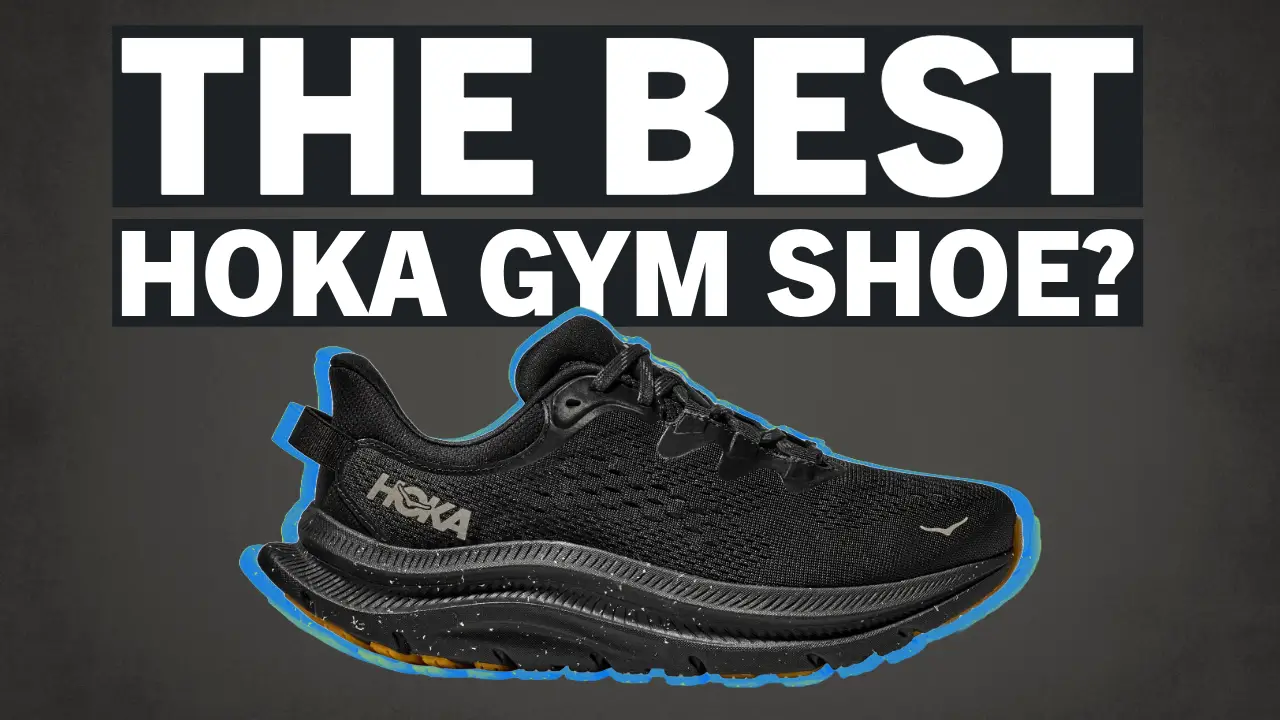 GearApril 6, 2024HOKA Kawana 2 Review – Are These The Best HOKA Gym Shoes?
GearApril 6, 2024HOKA Kawana 2 Review – Are These The Best HOKA Gym Shoes?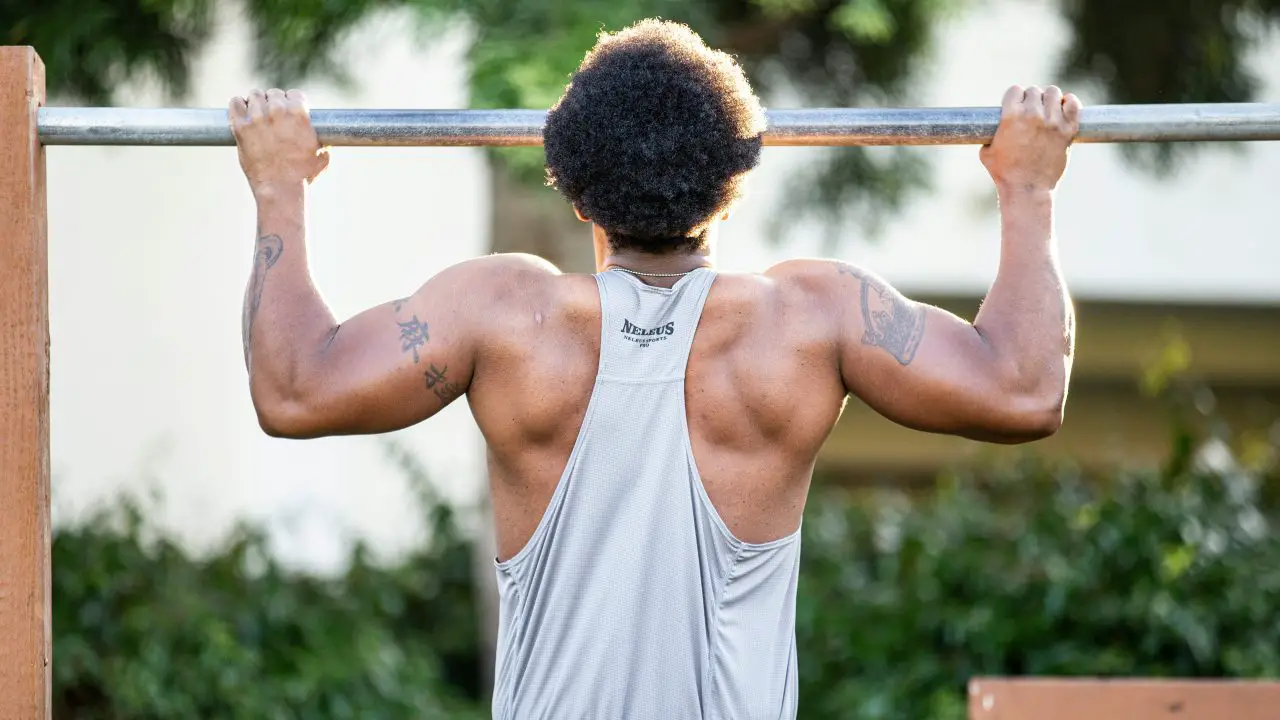 CrossFitApril 4, 2024How Many Pull-Ups Should I Do Daily? Let’s Figure it Out…
CrossFitApril 4, 2024How Many Pull-Ups Should I Do Daily? Let’s Figure it Out…
Affiliates:
This post may contain affiliate links that at no additional cost to you, the site may earn a small commission. We only recommend products we would use ourselves and all opinions expressed on this site are our own.
General Advice:
The information provided in this article is for general informational purposes only. It is not intended as a substitute for professional advice. Always consult with a qualified healthcare professional before starting any new diet, exercise program, or making changes to your health routine.
Accuracy Advice:
While we strive to provide up-to-date and accurate information, the content in this article may not reflect the most current research or medical guidelines. We encourage readers to do further research and consult with professionals for more personalized advice.
Our Recommendations:
The products and services mentioned in any of our articles are recommended based on our independent research and personal experience. We are not sponsored by any company. We aim to suggest products and services we believe are of high quality and could be beneficial to our readers.

